Close
International Grape Varieties

Reds – Cabernet Sauvignon, Merlot, Malbec, Cabernet Franc, Shiraz/Syrah, Pinot Noir
White – Chardonnay, Pinot Grigio/Gris, Riesling, Sauvignon Blanc, Aligote, Muscat Ottonel, Traminer
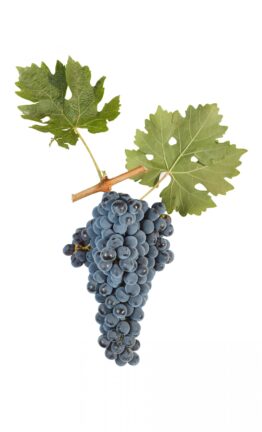
Cabernet Sauvignon
Country of origin: France, Gironde province
Parental forms: Cabernet Sauvignon is actually a hybrid descendant of the Sauvignon Blanc and Cabernet Franc varieties (genetic studies recently carried out at the Davis University of California).
Synonyms: Bidure, Bordeaux, Bordo, Lafit, Lafite, Lafet, Petit Cabernet.
It is grown in European countries, and less frequently in Australia, the USA, Africa, and South America.
The area planted with this variety in the Republic of Moldova (registered in RVV, 30.12.2019): This area covers 4644.4 ha, occupying 2nd place after the red varieties area and 1st place among areas under vineyards with PGI. It also includes 1635.0 ha registered for the production of wine products with PGI.
Cabernet Sauvignon is the ideal wine variety for improving qualities through aging. Over time its distinct aroma of black raisins can develop a bouquet with hints of cedar, violet, leather or tobacco and a consistent taste, softened by ripe tannins.
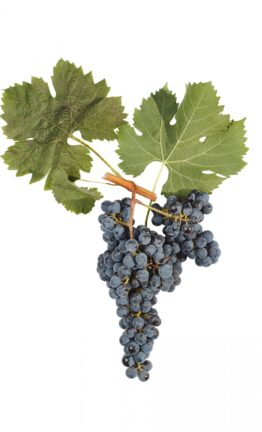
Merlot
Country of origin: France, Gironde-Bordeaux wine region, Medoc vineyard.
Parental forms: Cabernet Franc and Magdalen Noir de Charente (according to the DNA analysis).
Synonyms: Alicante, Alicante Noir, Black Alicante, Bigney, Bigney Rouge, Bidal, Bor-deleza, Vidal, Vitraille (Germany), Picard, Pikard, Planet Medok, Plant Du Medoc, Plant Medoc, Sud Des Graves Vidal, Bordoleze Belche (Spain).
It is cultivated in Italy, Brazil, Chile, California, Russia, Romania, Republic of Moldova, Australia, and New Zealand.
The area planted with this variety in the Republic of Moldova (registered in RVV, 30.12.2019): It ranks 3rd after the red varieties area and 3rd after the area of vineyards with PGI, covering 4525.7 ha, including an area of 1218.0 ha registered for the production of wine products with PGI.
Merlot wine has a rich aroma of blackberries, cherries, raspberries, dry plums, black pepper, and a full velvety taste.
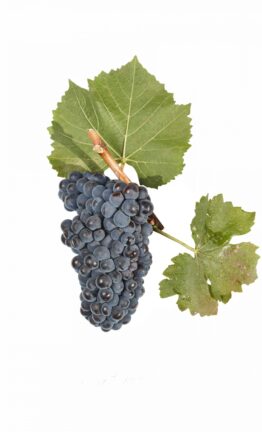
Pinot Noir
Country of origin: France, region Côte d’Or, Burgundy.
Parental forms: Traminer and Pinot Meunier clone or seed-derived rootstock (according to DNA analysis).
Synonyms: Arbst blauer, Augustiner, Blau Burgunder, Blauer Spaetburgunder, Vert Dore, Grosse Burgunder, Gentil Noir, Gris Meunier, Kék Burgundi, Claevner blau, Modra Burgunda, Morillon, Noir de Franconier, Petit Noir, Plant Dore, Farineux, Müllerrebe, Schwarzriesling, Muller-Traube, Dusty Miller, Miller’s Burgundy, etc.
It is grown in Germany, Austria, France, Italy, Switzerland, Spain (Catalonia), Romania, the Republic of Moldova and in a number of non-European countries such as New Zealand, Australia, the United States of America (coastal region of California), Oregon (Washington), Canada, Chile, South Africa and in some Asian countries.
The area planted with this variety in the Republic of Moldova (registered in RVV, 30.12.2019): It is ranked 6th after the area of red varieties and 3rd after the area of vineyards with PGI. It occupies 1271.7 ha, including 224.0 ha earmarked for the production of wine products with PGI.
Pinot Noir produces high quality noble red wines and is mostly recommended for the production of sparkling wine. The Pinot Noir wine has got a changeable aroma. When young, it has simple characteristics of cherries, plums, and strawberries (red, ripe fruit). As the wine matures its characteristics become more complex and start to additionally include raisins, hay, tobacco, leather, mushrooms, or black pepper flavours. It has got a pleasant, transparent reddish-brown colour.
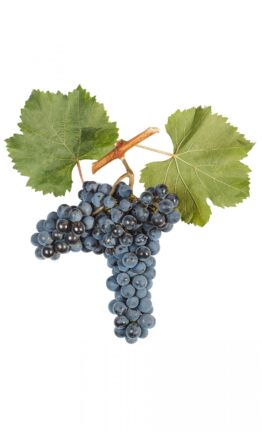
Malbec
Country of origin: France (Burgundy)
Parental forms: Magdalen Noir de Charente and Prunelard
According to its properties, Malbec belongs to the proles occidentalis Neg ecological-geographical group of Western European varieties.
Synonyms: Cot, Noir de Pressac, Medoc Noir, Auxerrois Tinturin, FranMoro, Jacobin Blauer.
It is cultivated in Italy, Russia, Romania, Republic of Moldova, Ukraine, Crimea, Azerba-jan, Australia, New Zealand, the USA, Brazil, and Chile. However, it is mostly popular in Argentina where the Malbec plantations occupy about 25,000 hectares.
The area planted with this variety in the Republic of Moldova (registered in RVV, 30.12.2019): This grape variety is not registered in the RVV, as the area under this variety is very small.
The Malbec variety is very delicate and has low resistance to low temperatures.
Malbec wine is characteristically brown in colour. Its taste contains cherries, currants and special notes of violets, chocolate, and coffee aroma.
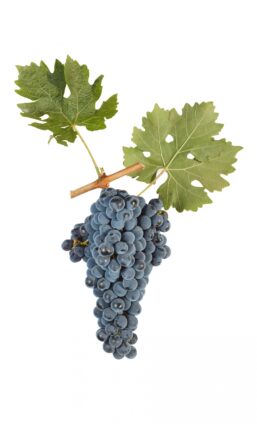
Syrah
The name of this variety in France and in most of the United States is Syrah, while in Australia, South Africa, and Canada it is called Shiraz. Until recently, it was called Hermitage in Australia.
Country of origin: France, Rhône Valley
Parental forms: Mondeuse Blanche and Diuresis (according to DNA analysis).
Synonyms: Шираз (Șiraz), Серии (Сeree), Серван черный (Servan Ciornii), Пти Сира (Peti Cira), Ermitaj, (Sirah, Sira) in Bulgaria, (Blauer Syrah) in Germany and in France (Sirac, Schiras, Syra, Serine, Candive Biaune, Marsane Noire Entournerin).
It is heavily cultivated in France (70,000 ha), Australia (40,000 ha), Italy, Germany, Switzerland, Cyprus, Malta, Bulgaria, Spain, USA, and South Africa.
The area planted with this variety in the Republic of Moldova (registered in RVV, 30.12.2019): The Syrah variety occupies only an area of 48.06 ha. S
The area planted with this variety in the Republic of Moldova (registered in RVV, 30.12.2019): The Syrah variety occupies only an area of 48.06 ha. Syrah is a dry red wine with a wonderful floral bouquet, reminiscent of wild black berries, spices, mushrooms, smoke, and tobacco. Its structure is above average, usually contain-ing a high level of tannic acid.
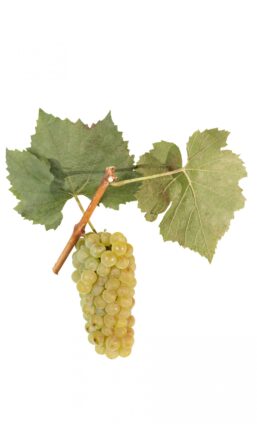
Chardonnay
Country of origin: France
The name Chardonnay originates from the French commune Chardonnay, located in the Saône-et-Loire, Burgundy. Its authenticity was recognized in 1872.
Parental forms: Modern analysis of the DNA structure (performed at the Davis University in California) shows that Chardonnay is the result of a crossbreeding between the Pinot Blanc and Gouais Blanc grape varieties. This possibility arose from the fact that the natives used to cultivate the two varieties on a large scale.
Synonyms: Pinot Chardonnay, Arnaison Blanc, Arnoison, Aubaine, Auvernas, Plant de Torennerre, Pinot Bianco Chardonnay, Feher Burgundy, Rouci Byle, Burgunder Weisser, etc.
It is cultivated with the best results on calcareous soils in Murfatlar vineyards and in the Purcari vineyards of the Republic of Moldova.
The area planted with this variety in the Republic of Moldova (registered in RVV, 30.12.2019): It is in 5th place and covers 2367.7 ha, including 1025.0 ha registered for the production of wine products with PGI. Dry Chardonnay wines are highly appreciated, characterised by a gentle and fine aroma. The wine is velvety, soft, with hints of white flowers and barberries. In the special conditions of the vineyards this Chardonnay variety is able to produce semi-sweet and sweet wines, characterised by complex aromas and bouquets, which show a good evolution while aged in bottles.
Dry Chardonnay wines are highly appreciated, characterised by a gentle and fine aroma. The wine is velvety, soft, with hints of white flowers and barberries. In the special conditions of the vineyards this Chardonnay variety is able to produce semi-sweet and sweet wines, characterised by complex aromas and bouquets, which show a good evolution while aged in bottles.
This variety was cultivated in the territory of Moldova in the post-phylloxera period. Best results are obtained when cultivated on calcareous soils. It is a self-fertile variety with small grapes and a short, thick tail. Berries are small, spherical, or slightly flattened with a yellow-green colour.
The Aligote variety is considered its relative grape variety.
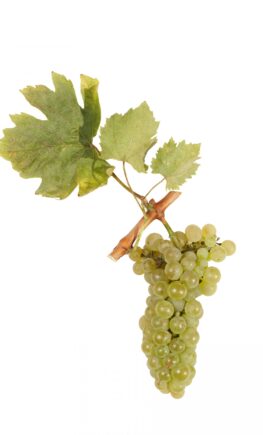
Aligote
Country of origin: France
Parental forms: Pinot Blanc and Gouais Blanc (This “successful” crossbreeding, additionally to Aligote also gave birth to Chardonnay and other varieties).
Synonyms: Chaudenet Gras, Giboudot Blanc, Muhranului, Plant Gris, Griset Blanc, Blanc de Troyes, etc.
Apart from being cultivated in France it is also cultivated in Bulgaria, Romania, Republic of Moldova, Russia, and Ukraine.
The area planted with this variety in the Republic of Moldova (registered in RVV, 30.12.2019): It is in first place in terms of occupied area, constituting 4734.1 ha, including 576.0 ha registered for the production of wine products with PGI.
The Aligote variety is excellent for the production of dry white wines, and also of wine used as a raw material for the production of distillates. It is characterised by a floral bouquet with notes of exotic fruits.
The Aligote grape variety, originating from the French Burgundy area, has acclimatised very well in the Republic of Moldova. It has a structure of small or medium-sized berries, arranged in cylindrical or cylindrical-conical fruit, winged, or slightly enlarged at the base. The berries of this grape are medium, spherical, sometimes deformed, light green, slightly yellowish and with shades of copper. The grape skin is thin and elastic. The content is juicy.
The obtained wine is white, with a specific light taste of wormwood and chicory, sometimes also compared with fruit miasmas. It is a semi-dry to dry wine, used for the production of quality white wines, or for raw wines intended as material for sparkling wines and for grape juices.

Sauvignon Blanc
Country of origin: France, Loire Valley, Bordeaux region.
Parental forms: Traminer and Chenin Blanc (most likely parental forms according to the DNA analysis).
Synonyms: Sauvignon Blanc, Sauvignon, Blanc Fume, Puinechou, Sauvignon fume, Sauvignon Jaune, Feigentraube, Muscat Silvaner, Fume Blanc, Gros Sauvignon, Petit Sauvignon, etc.
The area planted with this variety in the Republic of Moldova (registered in RVV, 30.12.2019): It ranks 4th in terms of area and covers 4239.8 ha, including 963.0 ha registered for the production of wine products with PGI.
Sauvignon Blanc is a wine with a canary yellow colour with bright green reflections. It has an intense aroma of jasmine or vine flowers. The taste is fruity, with a lot of freshness and a bouquet aroma, making it pleasant and tempting. When a wine is obtained by pellicular maceration accompanied by a directed fermentation, the wine intensifies its colour and becomes full-bodied.
Sauvignon Blanc is a French grape variety, originating in the west of France, in the Loire Valley of the Bordeaux region. The fruit is cylindrical, shaped like a truncated cone, often winged with yellow, small, dense, round berries. In the Republic of Moldova, it is cultivated on a large scale, aimed at obtaining dry, semi-dry or sweet wines.
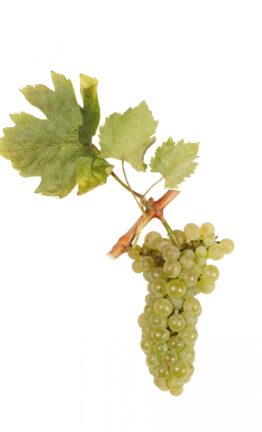
Pinot Gris
Country of origin: France, Burgundy.
Parental forms: The Pinot Gris grape variety originates from France and represents a bud variety of the Pinot Noir. Another version originates from crossing of Traminer and Pinot Meunier.
Synonyms: Pinot, Pinot Blanc, Pinot Bianco, Grossburgunder, Weissburgunder, Weisser Burgunder, Pinot Grigio, Malvoisie, etc.
The area planted with this variety in the Republic of Moldova (registered in RVV, 30.12.2019): It ranks 9th in terms of area and covers 779.7 ha, including 107.0 ha registered for the production of wine products with PGI.
Pinot Gris produces high quality dry wines and raw material wines for the production of sparkling wine.
Pinot Gris grapes are small, cylindrical, sometimes winged. The grains are small, spherical, with oily skin, smokey-grey in colour and intensely frosted. The grains overload the bunches, thus, causing their deformation. They contain a high accumulation of sugars. Flavours and aromas vary greatly from region to region and from style to style. But common features include notes of pears, apples, stone fruit, tropical fruit, sweet spices and even a hint of smoke or wet wool.

Traminer roz (aromatic variety)
Country of origin: Some ampelographers believe that it originates from the Italian Tyrol and is found in large areas in Bavaria, Germany.
Parental forms: Mondeuse Blanche and Diurese, according to DNA analysis.
Synonyms: Gewurztraminer, Traminer Roter, Piros Traminer, Kleiner Traminer, Savagnin Roz, Auvernas Rouge Clair, Klavner, Kleinbraun, etc.
It is cultivated in France, Germany, Italy, Austria, Romania, Hungary, and Croatia.
The total cultivated area covers about 8000 ha.
The area planted with this variety in the Republic of Moldova (registered in RVV, 30.12.2019): It is in 10th place in terms of planted area and occupies 623.4 ha.
The obtained wines are high quality whites, vinified dry, semi-dry or sweet.
Pink Traminer, or Gewürztraminer, is a noble variety of vine with small, round pearly pink berries, with a sweet taste of roses. The wine obtained from the Pink Traminer grapes is white, fruity, and fine. The special aroma makes it unique among other wines. The list of synonyms and the list of the Traminer grape varieties are very long, numbering over 120, and for this reason the exact relationship between Traminer, Gewürztra-miner and other cloned varieties continues to remain unclear.

Rhin Riesling
Country of origin: Germany, Rhine region
Parental forms: Ordinary selection
Synonyms: Petracinne, Riesling renano, Rajnai Riesling, White Riesling, Rendu, Starosvetske, Rossling, Rynsdruie.
It is cultivated in Austria, Serbia, Czech Republic, Slovakia, Luxembourg, Northern Italy, Australia, New Zealand, Canada, South Africa, China, Ukraine, and the United States (Washington, California, Michigan, and New York). Since 2004, Riesling has been esti-mated to be the 20th largest cultivated variety in the world, covering an area of 48,700 hectares. It is the most cultivated variety in Germany, constituting 23.0% of the planted area, located on 23,596 hectares. In the French region of Alsace, it constitutes 21.9 % of the planted area, located on 3,350 hectares.
The area planted with this variety in the Republic of Moldova (registered in RVV, 30.12.2019): It ranks 8th place in terms of planted area, covering 959.2 ha, including 600.0 ha registered for the production of wine products with PGI.
Typical Riesling aromas can range from citrus to green apple and peach, to apricot and mango and even guava. It is an extremely versatile variety, producing both dry, semi-dry and quality semi-sweet and sweet wines. It is also suitable for the production of sparkling wines.
Rhin Riesling is an aromatic and fruity grape variety of German origin. Riesling needs a long time to reach full maturity and to develop its typical aromas such as the famous oil hints. It is for this reason that it is being cultivated in cold areas where it can maintain its acidity until very late in autumn.
Riesling wines can be very complex and full-bodied. Usually, Rhin Riesling wines tell the story of the vines they come from, how complex is the terroir where the grapes grew. From Riesling with any level of sugar wines can be produced without losing its fruity character or fine structure. At full maturity, with an excellent concentration of fruity aro-mas and a high natural acidity, the Rhine Riesling (especially, the sweet one) has the necessary density and structure to maintain its qualities for decades.

Muscat Ottonel (aromatic variety)
Country of origin: France
Parental forms: Ordinary selection
Synonyms: Ottonel, Motenel, Ottonel Muscotaly, Ottonel Frontignan, Tamâioasa Ottonel, Muscat de Craciunel, Tîrnave, etc.
The area planted with this variety in the Republic of Moldova (registered in RVV, 30.12.2019): It ranks 7th place in terms of planted area, covering 1218.1 ha, including 384.0 ha registered for the production of wine products with PGI.
Muscat Ottonel is a noble grape variety for aromatic white wines, originating from France. The plant has a medium growth force. The berries are small or medium, round, white yellow, with a copper shade on the sunny side of the plant. The pulp is crispy, juicy, and has a thick skin.
The wines produced from Muscat Ottonel are high quality whites, dry, sweet, or semi-sweet. The wine is characterised by a straw-yellow colour and a typical Muscat aroma which evolves in short-term aging into a very complex bouquet and acquires a fine, deli-cate taste.
/ Follow us
/ Subscribe to news
/ Wineries / Tourism / Wine History / About ONVV / News
MD-2004, Republica Moldova, mun. Chișinău, str. Sfatul Țării, 59
office@wineofmoldova.com, tel. 022 105 560
Copyright © Oficiul Național al Viei și Vinului (ONVV). All rights reserved. Privacy Policy